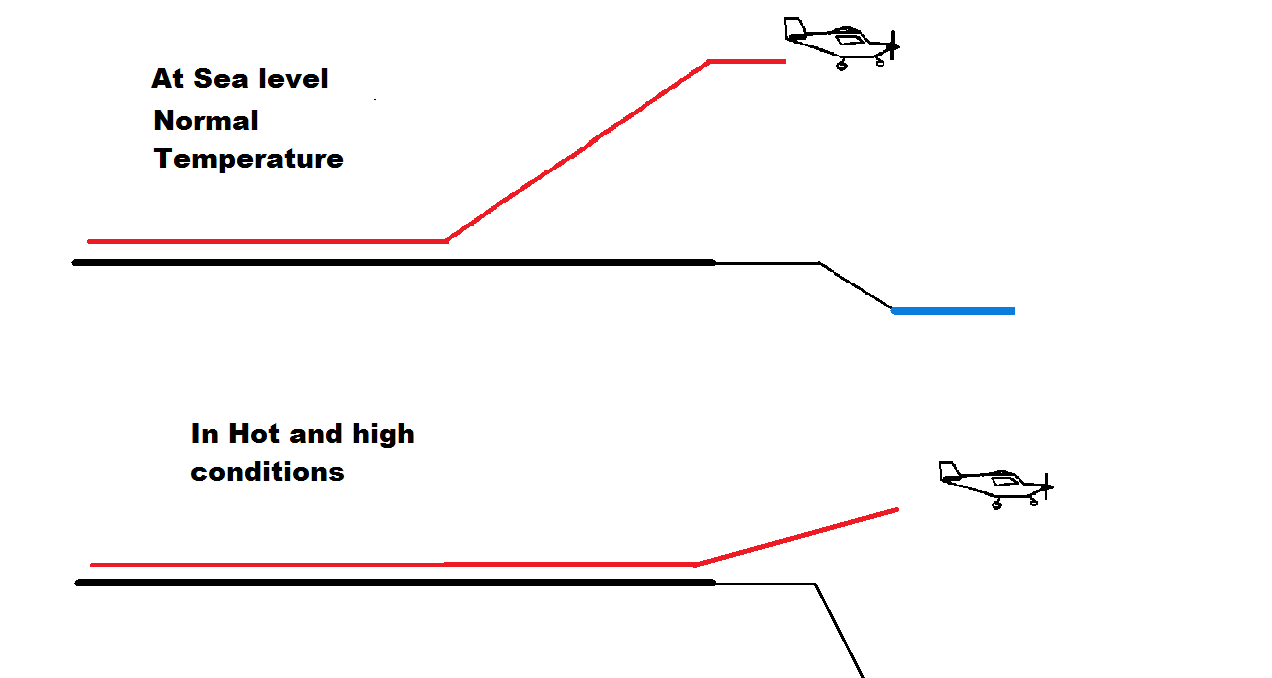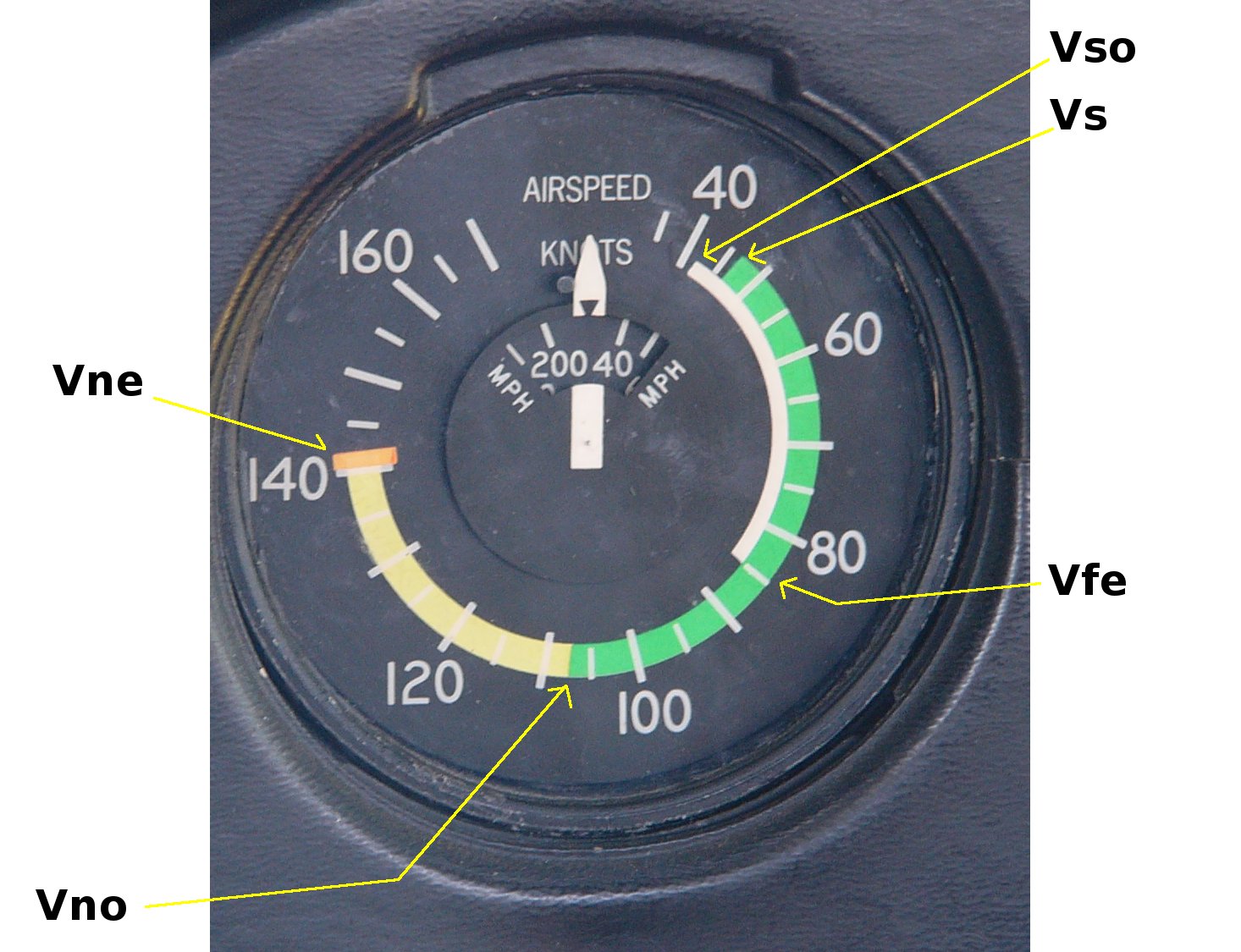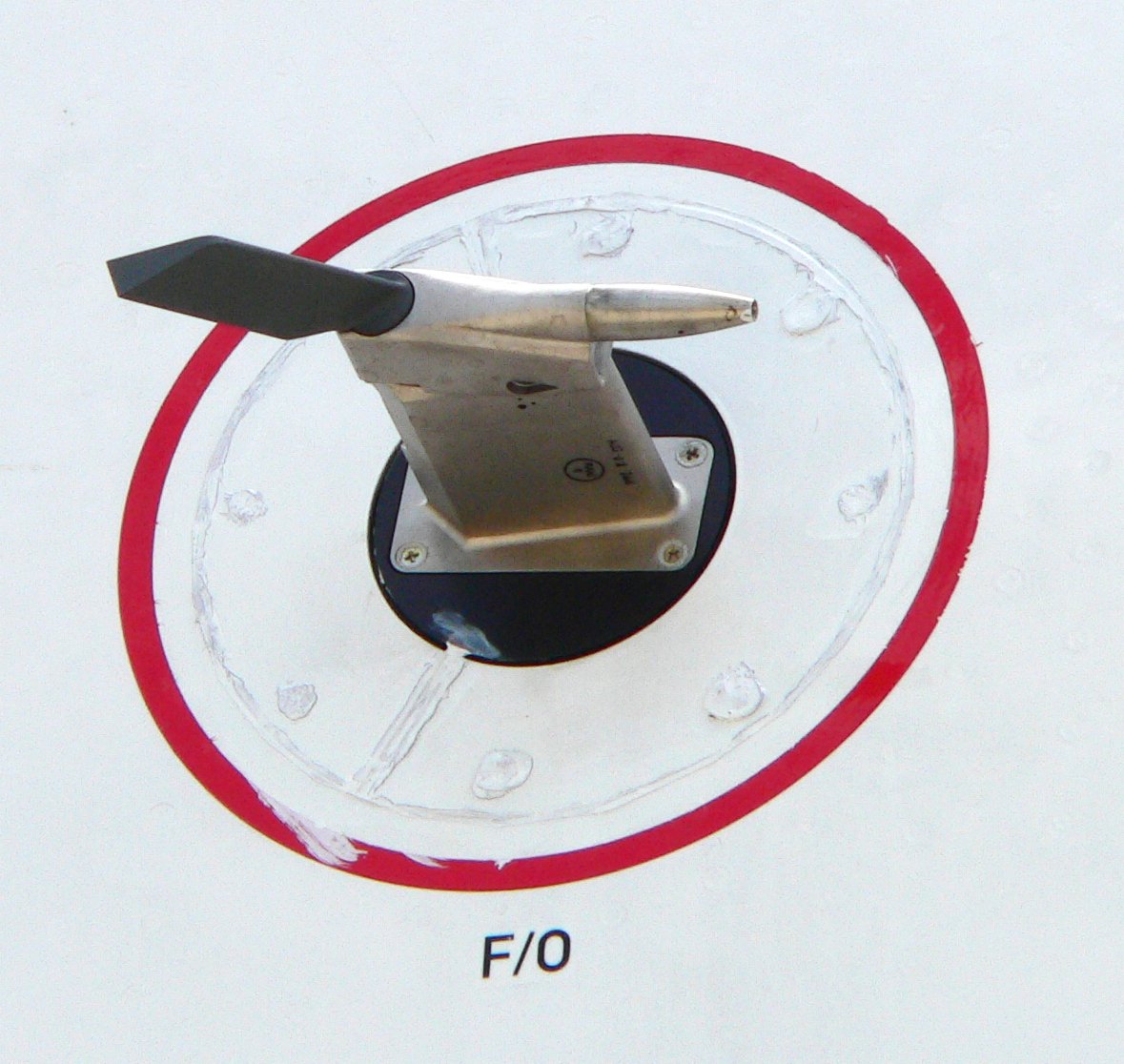|
Indicated Airspeed
Indicated airspeed (IAS) is the airspeed of an aircraft as measured by its pitot-static system and displayed by the airspeed indicator (ASI). This is the pilots' primary airspeed reference. This value is not corrected for installation error, instrument error, or the actual encountered air density, being instead calibrated to always reflect the adiabatic compressible flow of the International Standard Atmosphere at sea level. It uses the difference between total pressure and static pressure, provided by the system, to either mechanically or electronically measure dynamic pressure. The dynamic pressure includes terms for both density and airspeed. Since the airspeed indicator cannot know the density, it is by design calibrated to assume the sea level standard atmospheric density when calculating airspeed. Since the actual density will vary considerably from this assumed value as the aircraft changes altitude, IAS varies considerably from true airspeed (TAS), the relative vel ... [...More Info...] [...Related Items...] OR: [Wikipedia] [Google] [Baidu] |
Primary Flight Display
A primary flight display or PFD is a modern aircraft instrument dedicated to flight information. Much like multi-function displays, primary flight displays are built around a Liquid-crystal display or CRT display device. Representations of older six pack or "steam gauge" instruments are combined on one compact display, simplifying pilot workflow and streamlining cockpit layouts. Most airliners built since the 1980s—as well as many business jets and an increasing number of newer general aviation aircraft—have glass cockpits equipped with primary flight and multi-function displays (MFDs). Cirrus Aircraft was the first general aviation manufacturer to add a PFD to their already existing MFD, which they made standard on their SR-series aircraft in 2003. Mechanical gauges have not been eliminated from the cockpit with the onset of the PFD; they are retained for backup purposes in the event of total electrical failure. Components While the PFD does not directly use the pi ... [...More Info...] [...Related Items...] OR: [Wikipedia] [Google] [Baidu] |
Stall Speed
In fluid dynamics, a stall is a reduction in the lift coefficient generated by a foil as angle of attack increases.Crane, Dale: ''Dictionary of Aeronautical Terms, third edition'', p. 486. Aviation Supplies & Academics, 1997. This occurs when the critical angle of attack of the foil is exceeded. The critical angle of attack is typically about 15°, but it may vary significantly depending on the fluid, foil, and Reynolds number. Stalls in fixed-wing flight are often experienced as a sudden reduction in lift as the pilot increases the wing's angle of attack and exceeds its critical angle of attack (which may be due to slowing down below stall speed in level flight). A stall does not mean that the engine(s) have stopped working, or that the aircraft has stopped moving—the effect is the same even in an unpowered glider aircraft. Vectored thrust in aircraft is used to maintain altitude or controlled flight with wings stalled by replacing lost wing lift with engine or propeller t ... [...More Info...] [...Related Items...] OR: [Wikipedia] [Google] [Baidu] |
Hot And High
In aviation, hot and high is a condition of low air density due to high ambient temperature and high airport elevation. Air density decreases with increasing temperature and altitude. The lower air density reduces the power output from the aircraft's engine and also requires a higher true airspeed before the aircraft can become airborne. Aviators gauge air density by calculating the density altitude. An airport may be especially hot ''or'' high, without the other condition being present. Temperature and pressure altitude can change from one hour to the next. The fact that temperature decreases as altitude increases mitigates the "hot and high" effect to a small extent. Negative effects of reduced engine power due to hot and high conditions * Airplanes require a longer takeoff run, potentially exceeding the amount of available runway. * Reduced take-off power hampers an aircraft's ability to climb. In some cases, an aircraft may be unable to climb rapidly enough to clear terra ... [...More Info...] [...Related Items...] OR: [Wikipedia] [Google] [Baidu] |
V Speeds
In aviation, V-speeds are standard terms used to define airspeeds important or useful to the operation of all aircraft. These speeds are derived from data obtained by aircraft designers and manufacturers during flight testing for aircraft type-certification. Using them is considered a best practice to maximize aviation safety, aircraft performance, or both. The actual speeds represented by these designators are specific to a particular model of aircraft. They are expressed by the aircraft's indicated airspeed (and not by, for example, the ground speed), so that pilots may use them directly, without having to apply correction factors, as aircraft instruments also show indicated airspeed. In general aviation aircraft, the most commonly used and most safety-critical airspeeds are displayed as color-coded arcs and lines located on the face of an aircraft's airspeed indicator. The lower ends of the white arc and the green arc are the stalling speed with wing flaps in landing con ... [...More Info...] [...Related Items...] OR: [Wikipedia] [Google] [Baidu] |
Pascal (unit)
The pascal (symbol: Pa) is the unit of pressure in the International System of Units (SI), and is also used to quantify internal pressure, stress, Young's modulus, and ultimate tensile strength. The unit, named after Blaise Pascal, is defined as one newton per square metre and is equivalent to 10 barye (Ba) in the CGS system. The unit of measurement called standard atmosphere (atm) is defined as 101,325 Pa. Common multiple units of the pascal are the hectopascal (1 hPa = 100 Pa), which is equal to one millibar, and the kilopascal (1 kPa = 1000 Pa), which is equal to one centibar. Meteorological observations typically report atmospheric pressure in hectopascals per the recommendation of the World Meteorological Organization, thus a standard atmosphere (atm) or typical sea-level air pressure is about 1013 hPa. Reports in the United States typically use inches of mercury or millibars (hectopascals). In Canada these reports are given in ki ... [...More Info...] [...Related Items...] OR: [Wikipedia] [Google] [Baidu] |
Heat Capacity Ratio
In thermal physics and thermodynamics, the heat capacity ratio, also known as the adiabatic index, the ratio of specific heats, or Laplace's coefficient, is the ratio of the heat capacity at constant pressure () to heat capacity at constant volume (). It is sometimes also known as the ''isentropic expansion factor'' and is denoted by (gamma) for an ideal gasγ first appeared in an article by the French mathematician, engineer, and physicist Siméon Denis Poisson: * On p. 332, Poisson defines γ merely as a small deviation from equilibrium which causes small variations of the equilibrium value of the density ρ. In Poisson's article of 1823 – * γ was expressed as a function of density D (p. 8) or of pressure P (p. 9). Meanwhile, in 1816 the French mathematician and physicist Pierre-Simon Laplace had found that the speed of sound depends on the ratio of the specific heats. * However, he didn't denote the ratio as γ. In 1825, Laplace stated that the speed of sound is ... [...More Info...] [...Related Items...] OR: [Wikipedia] [Google] [Baidu] |
Stagnation Pressure
In fluid dynamics, stagnation pressure is the static pressure at a stagnation point in a fluid flow.Clancy, L.J., ''Aerodynamics'', Section 3.5 At a stagnation point the fluid velocity is zero. In an incompressible flow, stagnation pressure is equal to the sum of the free-stream static pressure and the free-stream dynamic pressure. Stagnation pressure is sometimes referred to as pitot pressure because the two pressures are numerically equal. Magnitude The magnitude of stagnation pressure can be derived from Bernoulli equation for incompressible flow and no height changes. For any two points 1 and 2: :P_1 + \tfrac \rho v_1^2 = P_2 + \tfrac \rho v_2^2 The two points of interest are 1) in the freestream flow at relative speed v where the pressure is called the "static" pressure, (for example well away from an airplane moving at speed v); and 2) at a "stagnation" point where the fluid is at rest with respect to the measuring apparatus (for example at the end of a pitot tube in an a ... [...More Info...] [...Related Items...] OR: [Wikipedia] [Google] [Baidu] |
Equivalent Airspeed
Equivalent airspeed (EAS) is calibrated airspeed (CAS) corrected for the compressibility of air at a non-trivial Mach number. It is also the airspeed at sea level in the International Standard Atmosphere at which the dynamic pressure is the same as the dynamic pressure at the true airspeed (TAS) and altitude at which the aircraft is flying. In low-speed flight, it is the speed which would be shown by an airspeed indicator with zero error.Houghton, E.L. and Carpenter, P.W. (1993), ''Aerodynamics for Engineering Students'', Section 2.3.3, Butterworth-Heinemann, Oxford UK. It is useful for predicting aircraft handling, aerodynamic loads, stalling etc. EAS = TAS \times \sqrt where: \rho\, is actual air density. \rho_0\, is standard sea level density (1.225 kg/m3 or 0.00237 slug/ft3). EAS is a function of dynamic pressure. EAS = \sqrt where: \, is dynamic pressure q = \tfrac12\, \rho\, v^, EAS can also be obtained from the aircraft Mach number and static pressure. EAS = ... [...More Info...] [...Related Items...] OR: [Wikipedia] [Google] [Baidu] |
Poisson Constant
In thermal physics and thermodynamics, the heat capacity ratio, also known as the adiabatic index, the ratio of specific heats, or Laplace's coefficient, is the ratio of the heat capacity at constant pressure () to heat capacity at constant volume (). It is sometimes also known as the ''isentropic expansion factor'' and is denoted by (gamma) for an ideal gasγ first appeared in an article by the French mathematician, engineer, and physicist Siméon Denis Poisson: * On p. 332, Poisson defines γ merely as a small deviation from equilibrium which causes small variations of the equilibrium value of the density ρ. In Poisson's article of 1823 – * γ was expressed as a function of density D (p. 8) or of pressure P (p. 9). Meanwhile, in 1816 the French mathematician and physicist Pierre-Simon Laplace had found that the speed of sound depends on the ratio of the specific heats. * However, he didn't denote the ratio as γ. In 1825, Laplace stated that the speed of sound is ... [...More Info...] [...Related Items...] OR: [Wikipedia] [Google] [Baidu] |
Compressibility
In thermodynamics and fluid mechanics, the compressibility (also known as the coefficient of compressibility or, if the temperature is held constant, the isothermal compressibility) is a measure of the instantaneous relative volume change of a fluid or solid as a response to a pressure (or mean stress) change. In its simple form, the compressibility \kappa (denoted in some fields) may be expressed as :\beta =-\frac\frac, where is volume and is pressure. The choice to define compressibility as the negative of the fraction makes compressibility positive in the (usual) case that an increase in pressure induces a reduction in volume. The reciprocal of compressibility at fixed temperature is called the isothermal bulk modulus. Definition The specification above is incomplete, because for any object or system the magnitude of the compressibility depends strongly on whether the process is isentropic or isothermal. Accordingly, isothermal compressibility is defined: :\beta_T=-\f ... [...More Info...] [...Related Items...] OR: [Wikipedia] [Google] [Baidu] |
Bernoulli's Equation
In fluid dynamics, Bernoulli's principle states that an increase in the speed of a fluid occurs simultaneously with a decrease in static pressure or a decrease in the fluid's potential energy. The principle is named after the Swiss mathematician and physicist Daniel Bernoulli, who published it in his book ''Hydrodynamica'' in 1738. Although Bernoulli deduced that pressure decreases when the flow speed increases, it was Leonhard Euler in 1752 who derived Bernoulli's equation in its usual form. The principle is only applicable for isentropic flows: when the effects of irreversible processes (like turbulence) and non-adiabatic processes (e.g. thermal radiation) are small and can be neglected. Bernoulli's principle can be applied to various types of fluid flow, resulting in various forms of Bernoulli's equation. The simple form of Bernoulli's equation is valid for incompressible flows (e.g. most liquid flows and gases moving at low Mach number). More advanced forms may be applie ... [...More Info...] [...Related Items...] OR: [Wikipedia] [Google] [Baidu] |
Pitot Tube
A pitot ( ) tube (pitot probe) measures fluid flow velocity. It was invented by a French engineer, Henri Pitot, in the early 18th century, and was modified to its modern form in the mid-19th century by a French scientist, Henry Darcy. It is widely used to determine the airspeed of aircraft; the water speed of boats; and the flow velocity of liquids, air, and gases in industry. Theory of operation The basic pitot tube consists of a tube pointing directly into the fluid flow. As this tube contains fluid, a pressure can be measured; the moving fluid is brought to rest (stagnates) as there is no outlet to allow flow to continue. This pressure is the stagnation pressure of the fluid, also known as the total pressure or (particularly in aviation) the pitot pressure. The measured stagnation pressure cannot itself be used to determine the fluid flow velocity (airspeed in aviation). However, Bernoulli's equation states: :Stagnation pressure = static pressure + dynamic pressure ... [...More Info...] [...Related Items...] OR: [Wikipedia] [Google] [Baidu] |

.jpg)




